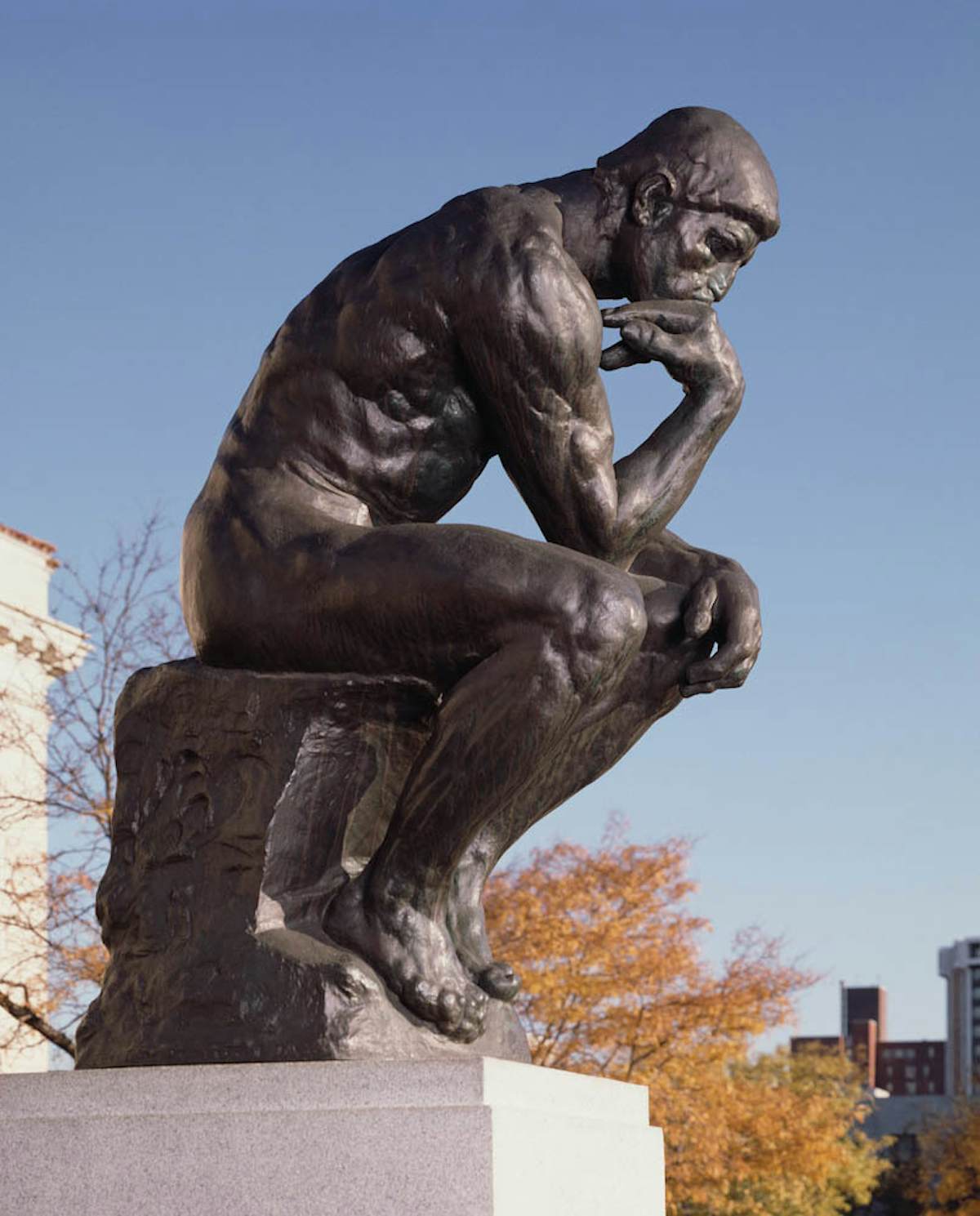EN-
Even Rodin's "Le Penseur" has his tail between his legs.
Contemporary Western society consists of a mixed bath of cultures and its accompanying codes of conduct towards their environment. With the immigration of individuals, we tend to set certain expectations for their behavior and assimilation in contemporary Western culture. What if we ask ourselves whether certain codes of conduct and expectations of behavior in this contemporary Western world have possibly evolved too far towards the artificial and thus the unnatural?
In societies that are more in contact with the natural physiological relationship with their environment, certain discomforts do not exist. Western society suffers disproportionately from low back pain. Could it be that the way we sit is potentially bad? If this brings a possibility to reinterpret some of our potentially outdated behaviors and related social-behavioral expectations. Just as humanity redefines its world through the tools it creates, can we make room to mix multiple attitudes and behaviors with our archaic values in order to define a unity in which each posture can find itself a home? What if we start by opening ourselves up to natural postures by taking a microscopic look at the people for whom we define public space?
We all seem about the same on the inside. Is it possible to (re)integrate the natural into the conventional?
NL-
Zelfs Rodin's "Le Penseur" zit met zijn staart tussen zijn benen.
De hedendaagse westerse samenleving bestaat uit een gemengd bad van culturen en zijn bijhorende gedragscodes naar zijn omgeving toe. Met de immigratie van individuen hebben we de neiging om bepaalde verwachtingen te stellen naar hun gedrag en assimilatie in de hedendaagse westerse cultuur. Wat als we ons de vraag stellen of bepaalde gedragscodes en gedragsverwachtingen in deze hedendaagse westerse wereld, mogelijks te ver naar het kunstmatige en dus onnatuurlijke zijn geëvolueerd?
In samenlevingen die meer in contact staan met de natuurlijke fysiologische relatie naar zijn omgeving, bestaan bepaalde ongemakken niet. De westerse samenleving een die buitenproportioneel lijdt aan lage rugpijn. Kan het zijn dat de manier waarop we zitten potentieel slecht is? Als dit een mogelijk schept om een aantal van onze mogelijks verouderde gedragingen en gerelateerde sociale- en gedragsverwachtingen te herinterpreteren. Net zoals de mensheid zijn wereld herdefinieert door middel van de instrumenten die hij creëert, kunnen we dan ruimte maken om meerdere houdingen en gedragingen te vermengen met onze archaïsche waarden om zo een eenheid te definiëren waarin elke postuur zich thuis kan vinden? Wat als we beginnen met ons open te stellen voor natuurlijke houdingen door een microscopische blik te werpen op de personen voor wie we de openbare ruimte definiëren?
We lijken allemaal ongeveer hetzelfde aan de binnenkant. Is het mogelijk om het natuurlijke te (her)integreren in het conventionele?
Jerom Geunens / Industrieel Ontwerper
